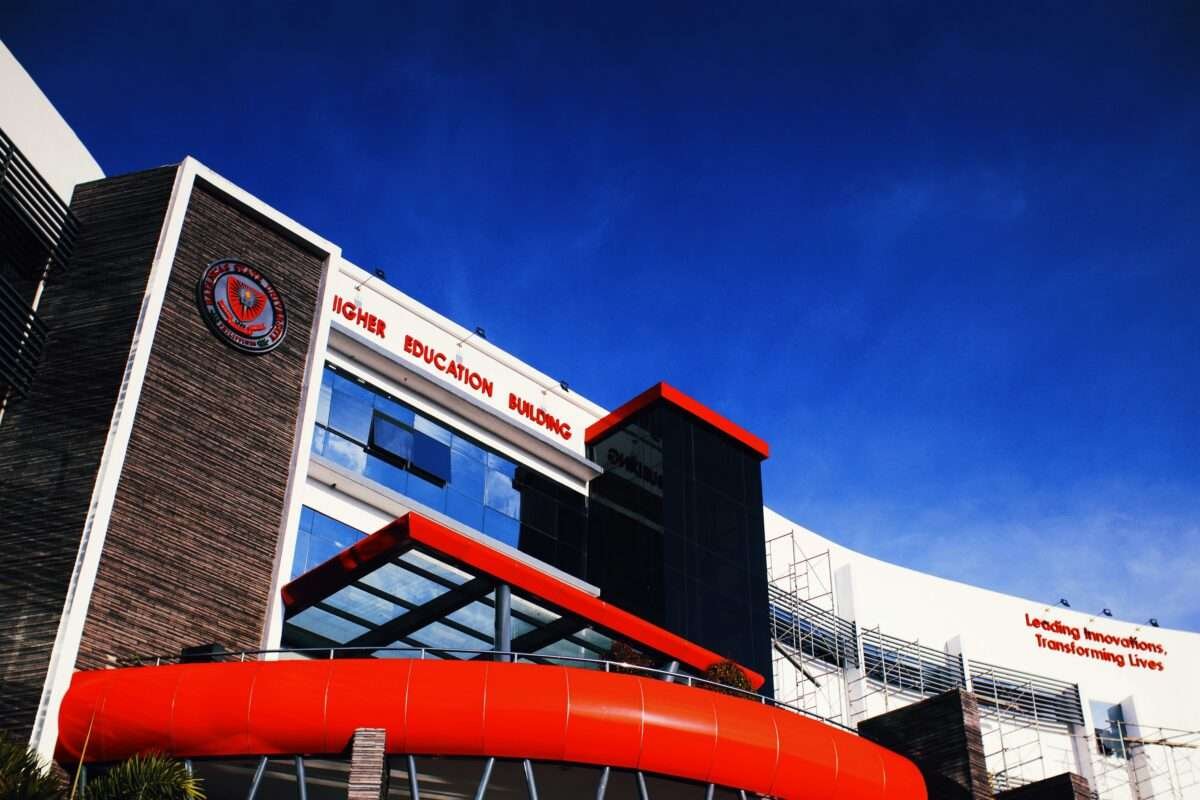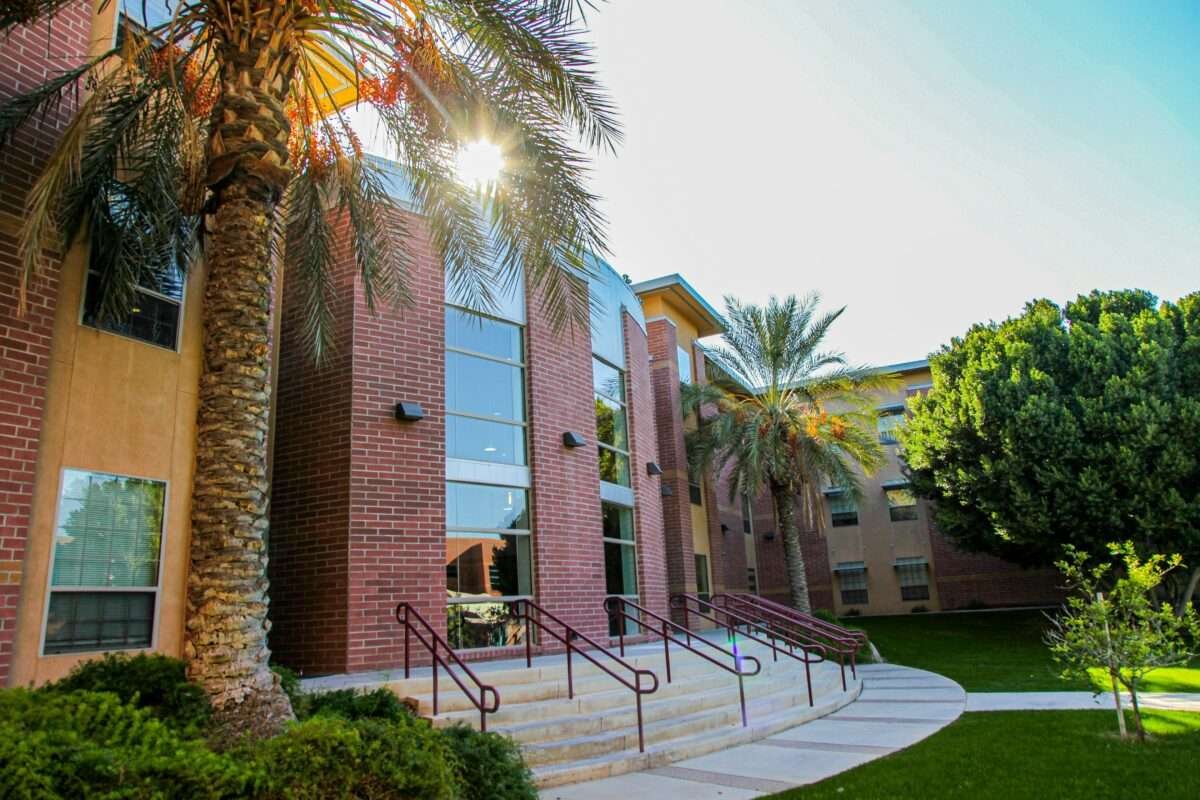In the grand tapestry of education, we often overlook the foundational thread that holds it all together – the very buildings in which we learn. School building design is more than aesthetics and functionality; it’s a silent yet powerful influence in the story of students’ daily educational experiences.
Read on to learn more about how much school building design really matters for all kinds of students. For the architects and educators shaping these environments, the details of design can alter the opportunity for learning outcomes and long-term success.

Understanding the Connection Between Learning and the Environment
The physical environment in which learning takes place significantly impacts the educational process, affecting everything from student well-being to their academic performance. Research underscores that thoughtful school design is not merely cosmetic; it plays a pivotal role in enhancing learning outcomes. A well-designed educational environment can drive student engagement, facilitate innovative teaching methods, and support the diverse needs of all learners.
Studies, such as in the Journal of Environmental Psychology, have found a strong correlation between classroom design elements—including light, temperature, air quality, and configuration—and student achievement. Their research, “The impact of classroom design on pupils’ learning: Final results of a holistic, multi-level analysis,” suggests that well-considered architectural and interior design strategies can boost students’ learning progress significantly.
Another compelling piece of evidence comes from the Earthman’s Impact of School Buildings on Student Achievement and Behavior report for the Council of Educational Facility Planners International. This document links school facility conditions directly with student performance, revealing that students in newer or renovated buildings tend to have better academic outcomes.
For educators, architects, and stakeholders, these findings highlight the necessity of prioritizing educational architectures that embody the principles of inclusive and learner-centered design. By fostering environments tailored to the pedagogical needs of the 21st century, schools can create spaces that not only look inviting but truly enrich the learning experience.
Key Elements of Effective School Building Design
When considering the key elements that contribute to effective school design, several factors stand at the forefront of creating an environment that lends itself to learning and development. These include natural light, acoustics, space layout, and accessibility, each playing a pivotal role in enhancing or diminishing the educational experience.
Natural Light: The inclusion of natural light in school building design has been linked to improved mood, increased concentration, and even higher scores on standardized tests. By designing classrooms and common areas with large windows and skylights, architects can harness the benefits of sunlight, reducing the reliance on artificial lighting and creating a more welcoming, vibrant space for students.
Acoustics: Effective acoustics are essential in a learning environment to minimize distractions and enhance communication between teachers and students. Incorporating sound-absorbing materials and designing spaces with acoustic considerations in mind can significantly reduce reverberation and external noise, ensuring that instructions and discussions are clearly heard and understood.
Space Layout: The layout of educational spaces directly impacts the capacity for teaching methodologies and student interaction. Flexible, modular spaces that can be easily reconfigured to suit different learning activities promote collaboration, creativity, and adaptability. The inclusion of breakout areas and quiet zones also supports individual learning styles and needs.
Accessibility: Universal design principles ensure that school environments are accessible to all students, regardless of physical ability. Features such as ramps, elevators, and adaptable classroom furniture ensure that the educational experience is inclusive and equitable, helping to create a sense of belonging, representation, and community among students.
Incorporating these key elements into school building design not only enhances the physical environment but significantly impacts learning outcomes and student well-being. Effective school design considers the diverse needs of its users, creating spaces that are not only functional but also inspiring, welcoming, and supportive of the educational journey.
Innovative Trends in School Architecture
The landscape of school architecture is witnessing a dynamic shift, prioritizing innovative trends that work to redefine educational spaces for the digital age. Among the most influential of these trends are flexible classrooms, green spaces, and seamless technology integration, each playing a critical role in facilitating adaptive, interactive, and sustainable learning environments.
Flexible Classrooms: The concept of flexible classrooms has gained popularity, driven by the need for spaces that support various teaching methods and learning styles. These classrooms are designed with movable furniture and adaptable layouts, allowing educators to tailor the environment to the day’s activities, whether it involves group projects, individual study, or lecture-based instruction. The flexibility of these spaces fosters a collaborative and engaging learning atmosphere, encouraging students to take an active role in their education.
Green Spaces: Incorporating natural elements into school building design is not just about aesthetics; it’s about creating healthier, more stimulating learning environments. Green spaces, including indoor gardens, rooftops with plant life, and outdoor classrooms, have been shown to improve air quality, reduce stress, and increase student engagement. These areas provide an escape from the traditional classroom setting, offering a unique setting for experiential learning and environmental education.
Technology Integration: In the digital era, technology integration is a fundamental aspect of modern school design. Classrooms equipped with the latest educational technology, from smart boards to digital learning platforms, offer students a multitude of resources at their fingertips. This integration facilitates a more interactive and personalized learning experience, enabling students to explore subjects in depth and at their own pace. The design of tech-enabled spaces also prepares students for the future, equipping them with the digital literacy skills necessary for success in the 21st century.
Together, these trends in school architecture not only reflect changes in educational goals but also signal a broader recognition of the role the physical environment plays in learning outcomes. By adopting flexible layouts, integrating green spaces, and harnessing the power of technology, schools can create environments that are not only conducive to learning but also supportive of the overall well-being and development of students.

Designing for Inclusion
The significance of designing schools that prioritize inclusion cannot be overstated. In an era where educational equity is increasingly recognized as crucial, the architecture of educational institutions must reflect and cater to the diversity of student needs, including those with disabilities. Inclusive design in school architecture goes further than mere compliance with legal standards; it embodies a commitment to creating an environment where every student, no matter their physical, cognitive, or sensory abilities, can thrive.
Inclusive school building design features that support this mission could include, but are not limited to, wide hallways and doorways, tactile indicators for students with visual impairments, adjustable lighting for students with sensory sensitivities, and technology-equipped classrooms that provide assistive learning devices and software. Such features make sure that the school environment is navigable, comfortable, and accessible to all students, fostering a sense of belonging and community.
Beyond physical adjustments, designing for inclusion also involves creating spaces that respect and include the diverse cultures, backgrounds, and identities of the student population. This can be achieved through the use of culturally responsive materials and the representation of diverse figures and themes throughout the school. By doing so, schools not only embrace students’ diverse needs but also celebrate their differences, contributing to an enriching and cultural educational experience for all.
These advancements highlight a significant shift towards environments that are not just about learning in a traditional and systematic sense but are focusing on fostering whole-person growth and encouraging creativity, with a deep sense of community.
In essence, inclusive design in schools underscores the belief that education is a universal right. It challenges traditional architectural paradigms and encourages innovation that aligns with the values of diversity, equity, and inclusion. By designing schools with inclusivity at the forefront, architects and educators can collaboratively ensure that every student has the opportunity to succeed and feel valued within their learning environment.
In the evolving landscape of education, the importance of school building design in enhancing learning outcomes and student well-being cannot be overstated. Forward-thinking trends equip educators by building flexible classrooms, integrated green spaces, seamless technology use, and a focus on inclusive design. These are not only changing the face of schools but are also deeply influencing the educational experiences of students.
As we look towards the future, the role of thoughtful and innovative architectural design in schools will continue to be pivotal. It’s an exciting time for institutions to reimagine and redefine what educational spaces can look like and how they can function to support diverse learning needs. In this spirit, Keiser Design Group innovates to advocate for the forefront of this transformation, ready to bring these visions to life. With a commitment to creating educational environments that are vibrant, inclusive, and adaptable to the changing needs of students and educators, Keiser Design Group invites schools, educators, and communities to join us in designing the future of education.
For those ready to redefine their educational spaces to better meet the needs of all students, contact Keiser Design Group. Together, we can create environments that not only foster learning but also inspire, include, and innovate for generations to come.


